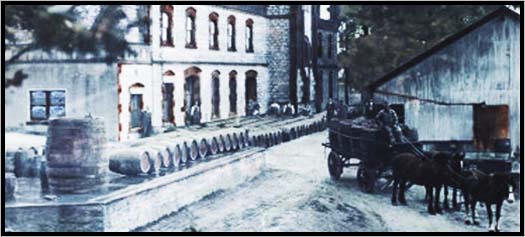|
|
|
|
|

|
|
Australian Wine History
In 1788 Captain Arthur Phillip alighted at Sydney Cove importing Australia’s first grape vines from Brazil and the Cape of Good Hope. This tentative start was the birth of a thriving viticultural industry that in a fraction over 200 years would be exporting over 800 million litres of wine to the world.
The earliest vines were planted in Sydney and unfortunately due to the heat and humidity of the Farm Cove site the vineyard never flourished. John Macarthur on his Camden Park property some 50km South West of Sydney is widely credited with cultivating Australia’s first commercial vineyard and winery early in the 1800’s. Principal varieties grown were Pinot Gris, Frontignac, Gouais, Verdelho and Cabernet Sauvignon.
Commercial vineyards for wine production were well established in most States by 1850. The ancient Australian soils, protected by their very remoteness from the ravages of industrialization and disease, proved fertile. From the gently undulating soils of the Hunter, to the steep, windswept gradients of the Eden Valley, through to the maritime slopes of Geelong, the early vignerons embraced the vagaries of the vast Australian landscape.
By 1854 the first wine export to the United Kingdom had been formally recorded – 1,384 gallons (6,291 litres).
In the mid 1800’s, Phylloxera, decimated over two thirds of the vineyards in Europe and by 1875 Australia fell victim. Strict quarantine regulations, restricting the movement of vine material between Australian wine regions, enabled South Australia’s wine regions, such as the Barossa Valley, to remain Phylloxera free and thus today lay claim to some of the oldest vines in the world – resolutely growing on their original European rootstocks!
Domestic consumption of wine vastly increased during World War Two (WWII). The critical shortage of beer saw the thirsty armies of both the US and Australia seeking alternative beverages and until the 1960’s approximately 80% of Australian made wine was sweet fortified sherry and port styles, known in the UK as ‘Colonial Wine’. Contemporary tastes swung slowly away from fortified wine under the influence of post-WWII migrants from Europe who introduced their culture of enjoying food with table wine in restaurants and at home.
Interestingly as early as 1925, the legendary Maurice O’Shea had been quietly championing table wine at his Mount Pleasant vineyard in the Hunter Valley. A master blender, O’Shea’s finely crafted table wines were unprecedented in Australia at the time. Twenty six years later, Penfold’s pioneering winemaker Max Schubert experimented with his first vintage of Grange – the iconic dry red destined to become Australia’s most lauded wine.
By mid 1970, fuelled by consumers’ thirst for dry red table wine, sales of fortified were finally eclipsed and 1980 saw domestic wine consumption per capita reach 17.3 litres, ‘bag in box’ packaging had been perfected, and the liberalization of liquor licensing laws had spawned a profusion of liquor outlets. Consumers had never had it so good and the national palate swung firmly in favor of white wine.
|
|
|


